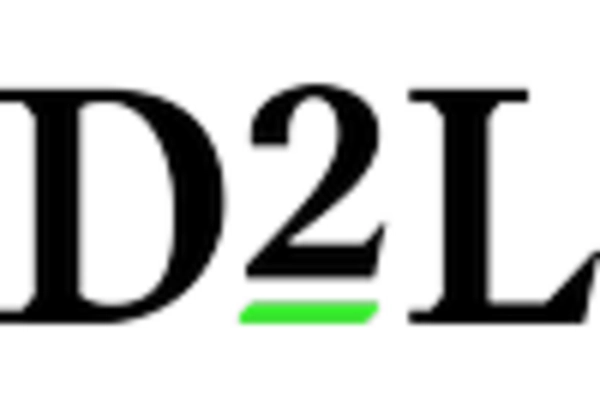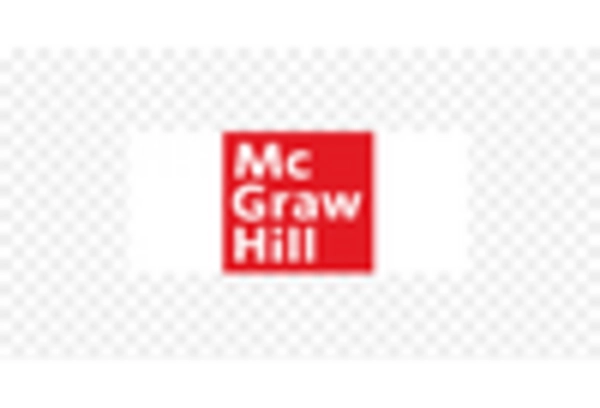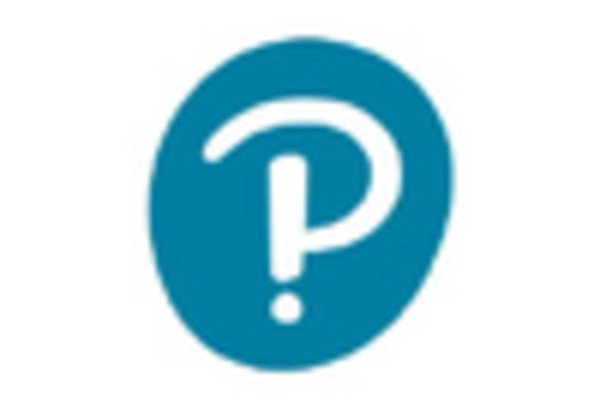Germany : Strong Demand and Innovation Drive Growth
Germany holds a commanding market share of 1.8 in the blended learning sector, driven by a robust educational framework and increasing digital adoption. Key growth drivers include government initiatives promoting digital education, significant investments in educational technology, and a rising demand for flexible learning solutions. The regulatory environment supports innovation, with policies aimed at enhancing digital infrastructure in schools and universities, fostering a conducive environment for blended learning.
UK : Innovative Solutions and Diverse Offerings
The UK boasts a market share of 1.5, characterized by a diverse range of blended learning solutions tailored to various educational needs. Growth is fueled by increasing demand for personalized learning experiences and the integration of technology in traditional classrooms. Government policies support digital literacy and educational innovation, while the competitive landscape features major players like Pearson and McGraw-Hill, enhancing the market's dynamism.
France : Government Support and Market Potential
France's blended learning market, valued at 1.1, is experiencing significant growth due to government initiatives aimed at modernizing education. The demand for blended learning is rising, particularly in urban areas like Paris and Lyon, where educational institutions are increasingly adopting digital tools. Regulatory frameworks encourage innovation, while local players and international firms like Cengage Learning are actively competing to capture market share.
Russia : Digital Transformation in Education
With a market share of 0.7, Russia's blended learning sector is on the rise, driven by a growing emphasis on digital education and government support for technological integration in schools. Key cities like Moscow and St. Petersburg are leading the charge, with increasing investments in educational technology. The competitive landscape includes both local and international players, creating a dynamic environment for growth and innovation.
Italy : Cultural Shift Towards Digital Education
Italy's blended learning market, valued at 0.5, is gradually expanding as educational institutions embrace digital solutions. Key growth drivers include a cultural shift towards online learning and government initiatives promoting digital literacy. Major cities like Milan and Rome are at the forefront of this transformation, with a competitive landscape featuring both local and international players, fostering a diverse range of educational offerings.
Spain : Adapting to New Educational Norms
Spain's blended learning market, with a share of 0.4, is witnessing a surge in demand as educational institutions adapt to new learning paradigms. Key growth factors include government support for digital education and a growing acceptance of online learning among students. Cities like Madrid and Barcelona are pivotal markets, with a competitive landscape that includes both established players and emerging startups, enhancing the sector's vibrancy.
Rest of Europe : Varied Market Dynamics and Growth Potential
The Rest of Europe, with a market share of 0.26, presents diverse opportunities in the blended learning sector. Growth is driven by varying levels of digital adoption and government initiatives across different countries. The competitive landscape is fragmented, with local players and international firms vying for market share. Specific applications in vocational training and adult education are gaining traction, reflecting the region's unique educational needs.


















Leave a Comment